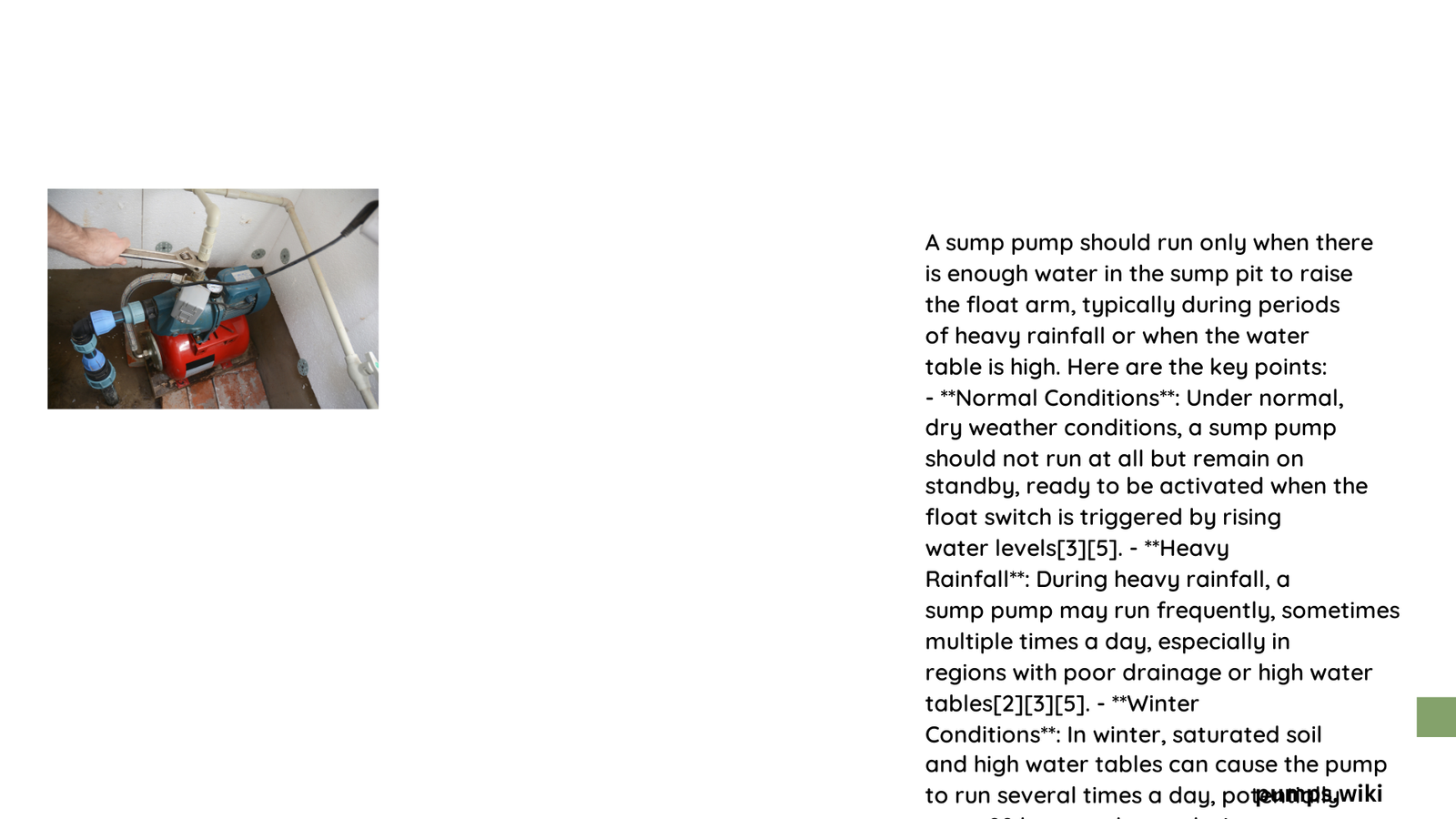Sump pumps are critical home protection devices that manage water accumulation and prevent basement flooding. Understanding how often a sump pump should run depends on multiple factors including rainfall intensity, groundwater levels, and specific home characteristics. Homeowners need to recognize the balance between necessary water removal and potential pump wear, ensuring optimal performance during critical moisture events.
What Determines Sump Pump Operational Frequency?
Sump pump runtime is not a one-size-fits-all scenario. Several key factors influence how frequently your pump activates:
Water Volume and Groundwater Conditions
| Condition | Pump Activation Frequency | Typical Runtime |
|---|---|---|
| Low Moisture | 1-3 cycles per day | 30-60 seconds |
| Moderate Rain | 4-8 cycles per day | 1-2 minutes |
| Heavy Rainfall | 10-20 cycles per day | Continuous/Intermittent |
Factors Affecting Pump Cycle Frequency
- Geographical Location
- Regions with high water tables require more frequent pump operation
-
Coastal and low-lying areas experience more consistent water challenges
-
Seasonal Variations
- Spring and autumn typically demonstrate increased pump activity
- Snowmelt and heavy rainfall periods trigger more frequent cycles
How Long Can a Sump Pump Operate Continuously?

Most residential sump pumps can operate continuously for 6-22 hours without significant mechanical stress. However, prolonged continuous operation indicates potential underlying drainage issues that require professional assessment.
Warning Signs of Excessive Pump Activity
- Pump running every 20-30 seconds
- Constant water accumulation
- Unusual motor strain or overheating
- Rapid cycling between on/off states
Recommended Maintenance for Optimal Performance
To ensure your sump pump operates efficiently:
- Inspect Quarterly: Check for debris, test pump functionality
- Clean Sump Pit: Remove sediment and potential blockages
- Verify Discharge Line: Ensure proper water redirection
- Test Backup Power: Confirm generator/battery backup systems work
When to Seek Professional Help
Contact a waterproofing specialist if you observe:
– Continuous pump operation lasting more than 24 hours
– Inability to manage water volume
– Frequent pump failures
– Unexplained moisture in basement
Technical Specifications for Pump Performance
The average residential sump pump can:
– Discharge approximately 30-50 gallons per minute
– Handle water depths between 6-10 inches per cycle
– Operate effectively for 5-10 years with proper maintenance
Calculation of Pump Efficiency
Pump Efficiency Formula:
(Gallons Pumped ÷ Pump Capacity) × Operational Time = Efficiency Percentage
Conclusion
Understanding how often your sump pump should run involves monitoring environmental conditions, maintaining equipment, and recognizing potential warning signs. Regular inspection and proactive management will help protect your home from water damage.
Pro Tips
- Install water level alarms
- Consider battery backup systems
- Upgrade to higher capacity pumps in flood-prone areas
References:
– Sump Pump Maintenance Guide
– Waterproofing Techniques
– Home Drainage Solutions
